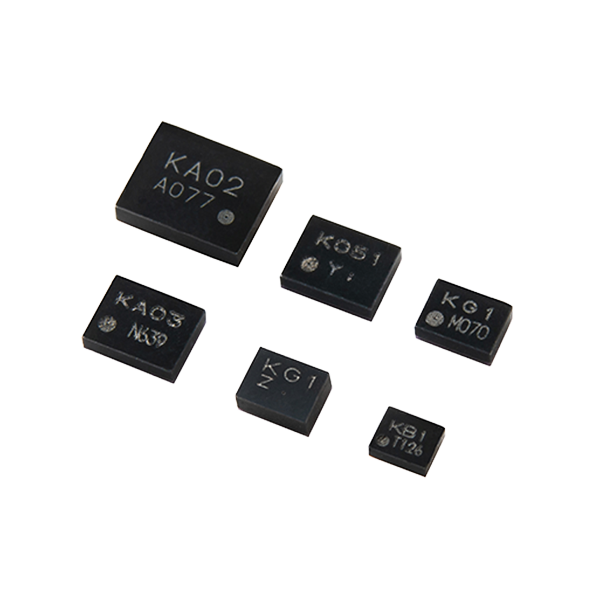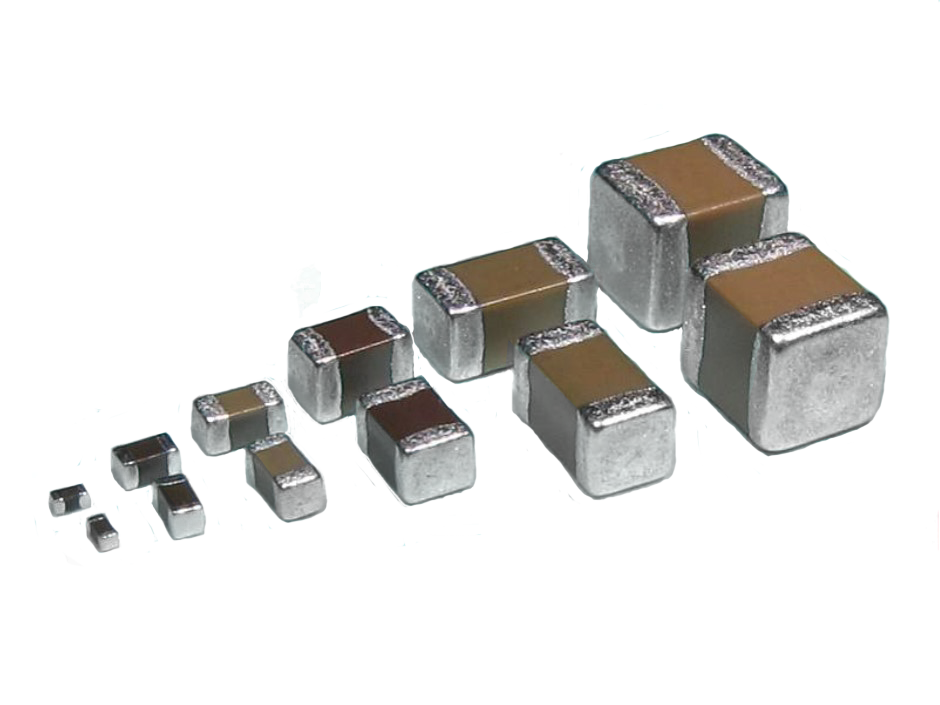전자부품 용어집
캐패시터
Change of capacitance against the AC voltage.
The decrease of capacitance over time.
Index of the ability of how much potential energy can be stored. Unit is "F".
1. Stores DC power, enabling charge and discharge.
2. An electronic component which passes the AC (signal and/or high-frequency noise) through and prevents DC.
Related Products Capacitor
To eliminate the DC voltage and only pass AC signals through.
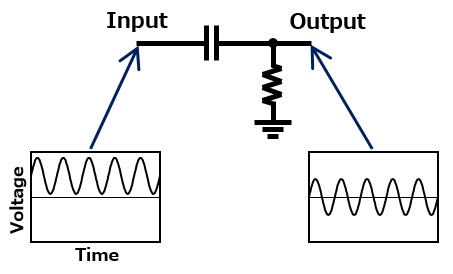
Change of capacitance against the DC voltage.
The measurement of the ability of a dielectric to store potential energy in external electric fields.
Index of energy loss caused due to the resistivity of dielectric and electrode material.
Substance that can be polarized in external electric fields and stores DC power.
Rated capacitance of capacitors is defined by E series according to the JIS - Japanese Industrial Standards. "E STANDARD NUMBERS" in our catalogue
E3 series: Multiple of cardinal numbers 10, 22 and 47
E6 series: Multiple of cardinal numbers 10, 15, 22, 33, 47, and 68
E12 series: Multiple of cardinal numbers 10, 12, 15, 18, 22, 27, 33, 39, 47, 56, 68 and 82
Abbreviation of Electromagnetic Compatibility. The concept of enabling electronic devices to function without EMI.
Abbreviation of Equivalent Series Resistance. One of the resistant components in an AC circuit. ESR depends on dielectric loss caused by the dielectric material and resistivity of the electrode material.
There are immersing method and jet flowing method. After inserting leads of components into PCB holes or pre-fixing components on PCB, soldered by immersed in a molten solder bath or by jet solder.
It is an activator that improves solderability, and has oxide film removal and thermal conductivity effects.
Mainly X5R, X7R, X7S type capacitors, and barium titanate dielectric ceramics are its main material. Compared with the temperature-compensating type, variation in capacitance is larger due to temperatures, voltages, and ageing; however, this type can be smaller in size to gain high capacitance values.
The extent to which a dielectric material resists leakage current measured under DC voltage.
The charge orientation in dielectrics. Dielectric crystals contain positive and negative sides due to the structure in external electric fields.
Rated voltages (withstand voltages) are expressed by combination of alphanumeric as follows:
| Rated voltage | 4V | 6.3V | 10V | 16V | 25V | 35V | 50V | 100V |
| Code | 0G | 0J | 1A | 1C | 1E | 1V | 1H | 2A |
A soldering method in which solder is applied to electronic components and then melted in a reflow oven to permanently mount them to a printed circuit board (PCB).
Gap between the highest point and lowest point of loss within a passband.
Abbreviation of Surface Mount Device. Components suitable for SMT equipment.
To suppress the ripple and smooth the voltage fluctuation.
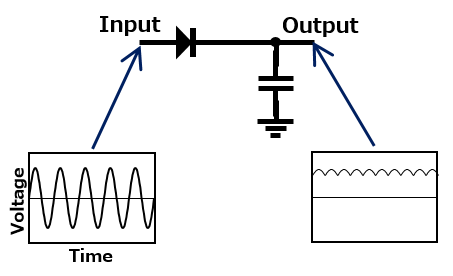
Abbreviation of Surface Mount Technology. A method of producing electronic circuits on a printed circuit board (PCB) by applying solder paste and placing components on the PCB's surface before the solder is melted in a reflow oven.
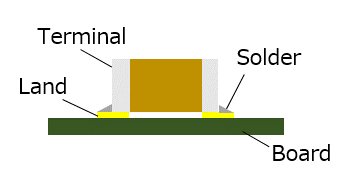
Mainly CG and CH type capacitors and titanium oxide and zirconate dielectric ceramics are its main materials. With small variation in capacitance due to temperatures, voltages, and ageing, this type is suitable for applications requiring stability; however, rated capacitances are smaller than high dielectric constant type capacitors.
The unit of capacitance of capacitors is picofarad (pF) and expressed in three-digit alphanumeric. The first and second figures are significant digits and the third figure expresses the number of zeros that follow the two numbers. If there is a decimal point, it is expressed by the capital letter "R." In this case, all figures are significant digits.
e.g.) "475" = 4,700,000pF = 4.7µF, "4R7" = 4.7 pF, "R50" = 0.5 pF




